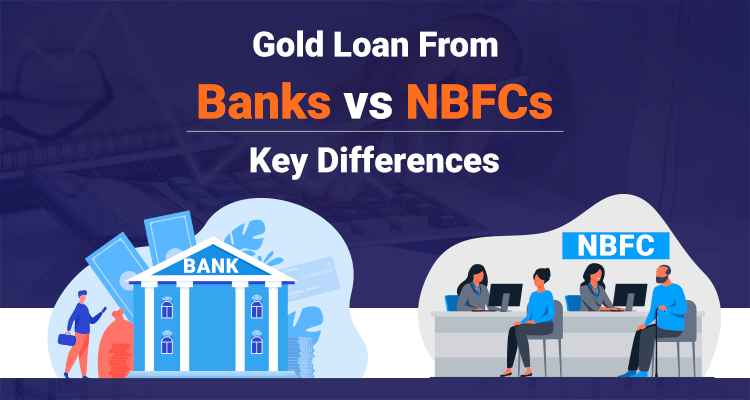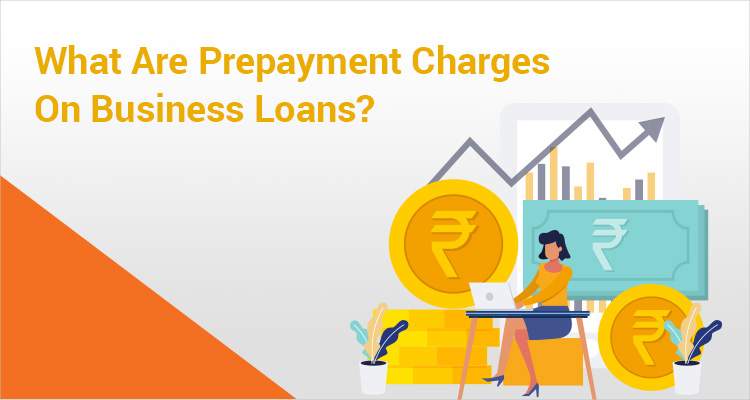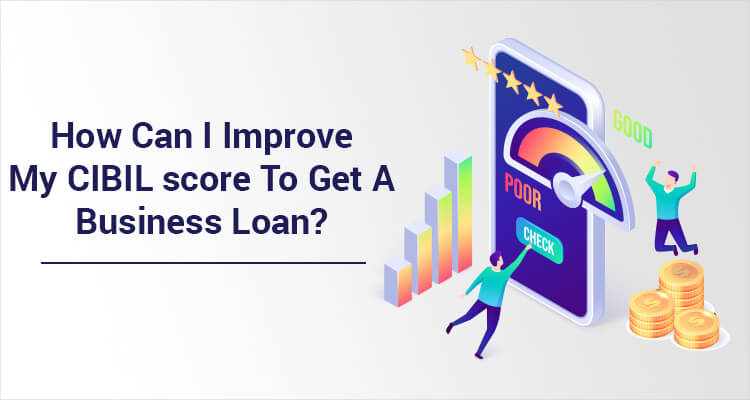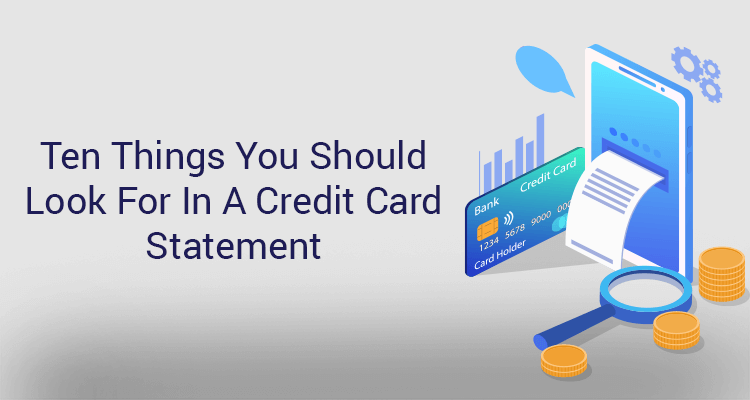Gold Loan From Banks vs NBFCs—Some Key Differences

According to a report by The Times of India, applications for gold loans sanctioned by non-banking finance companies (NBFCs) rose by 20% in the third quarter of 2021-22. This data is indicative that people have started trusting NBFCs and are choosing to take loans from them. In addition, there has been an increase in cash demand post-COVID-19, leading people to opt for gold loans.
This article digs deeper into gold loans provided by banks and by NBFCs.
Gold Loans From Banks vs Gold Loans From NBFCs
Eligibility Criteria:
Anyone above 18 years is eligible to pledge their gold to avail of the gold loan. However, the maximum age limit for most commercial banks is 65 years, whereas an NBFC provides gold loans for people up to the age of 75 years.Interest Rates:
While banks offer loan interest rates from 14% to 18%, NBFCs offer gold loans at an interest rate ranging from 10% to 28%. Apart from interest rates, check for processing fees, penal fees, and other additional costs before deciding on an institution to avail of your gold loan.Digital Loan Disbursal Process:
NBFCs have quick digital loan disbursal processes with little documentation. NBFCs can initiate the loan disbursement within 30 mins, whereas banks can take a few days and documents to get it approved.Loan-To-Value:
It is essentially an assessment of lending risk performed by a secured loan provider. The loan-to-value ratio is the percentage of the gold value that a financial institution can lend a borrower. The Reserve Bank of India (RBI) has set a cap on the loan amount limit at 75% of the collateralized asset.Repayment Tenure:
NBFCs have the flexibility to avail loans for a shorter term, from 3 months to 1 year. They help borrowers meet their short-term cash requirements and release their gold articles as soon as possible. On the other hand, banks usually offer longer tenure loans ranging between 1 year to 3 years.Terms Of Repayment:
Generally, banks charge an EMI, which requires a stable monthly inflow for the borrowers. The default on EMI can be hefty. On the other hand, NBFCs charge only monthly interest and allow bullet repayments.Therefore, it is evident that while commercial banks have been at the forefront of traditional lending, NBFCs are making it easy for people to avail gold loans quickly and hassle-free.
Frequently Asked QuestionsQ.1: What is the minimum amount of gold loan I can get from NBFCs?
Ans: NBFCs can provide you with a gold loan starting from as low as Rs. 100 with no limit to the maximum value in some cases. The commercial banks offer a minimum gold loan amount of Rs. 10,000.
Q.2: What is LTV?
Ans: Loan-to-Value or LTV is essentially an assessment of lending risk performed by a secured loan provider. The Reserve Bank of India (RBI) has set a cap of up to 75% of the gold value that a financial institution can lend a borrower.
Q.3: Is it easier to get a Gold loan from an NBFC than from a bank?
Ans: Yes, NBFCs approve gold loans faster and require lesser documents. It is also available to borrowers without a credit score.
Disclaimer:The information contained in this post is for general information purposes only. IIFL Finance Limited (including its associates and affiliates) ("the Company") assumes no liability or responsibility for any errors or omissions in the contents of this post and under no circumstances shall the Company be liable for any damage, loss, injury or disappointment etc. suffered by any reader. All information in this post is provided "as is", with no guarantee of completeness, accuracy, timeliness or of the results etc. obtained from the use of this information, and without warranty of any kind, express or implied, including, but not limited to warranties of performance, merchantability and fitness for a particular purpose. Given the changing nature of laws, rules and regulations, there may be delays, omissions or inaccuracies in the information contained in this post. The information on this post is provided with the understanding that the Company is not herein engaged in rendering legal, accounting, tax, or other professional advice and services. As such, it should not be used as a substitute for consultation with professional accounting, tax, legal or other competent advisers. This post may contain views and opinions which are those of the authors and do not necessarily reflect the official policy or position of any other agency or organization. This post may also contain links to external websites that are not provided or maintained by or in any way affiliated with the Company and the Company does not guarantee the accuracy, relevance, timeliness, or completeness of any information on these external websites. Any/ all (Gold/ Personal/ Business) loan product specifications and information that maybe stated in this post are subject to change from time to time, readers are advised to reach out to the Company for current specifications of the said (Gold/ Personal/ Business) loan.



